This regularly updated page gathers a list of what can be considered the best distortion pedals on the market according to a list of reputable online sources and reviews.
Together with fuzz and overdrive, distortion stompboxes fall under what electric guitarists commonly refer to as the “dirt box” umbrella. If you aren’t sure about the differences between those three types of effects, we’d recommend reading our article entitled Overdrive Vs Distortion Vs Fuzz: What’s The Difference?
Please note that this page only covers pedals strictly labeled as distortions, not overdrives or fuzzes, although this doesn’t necessarily mean that some of the devices in this list can’t deliver overdrive or fuzz-like tones.
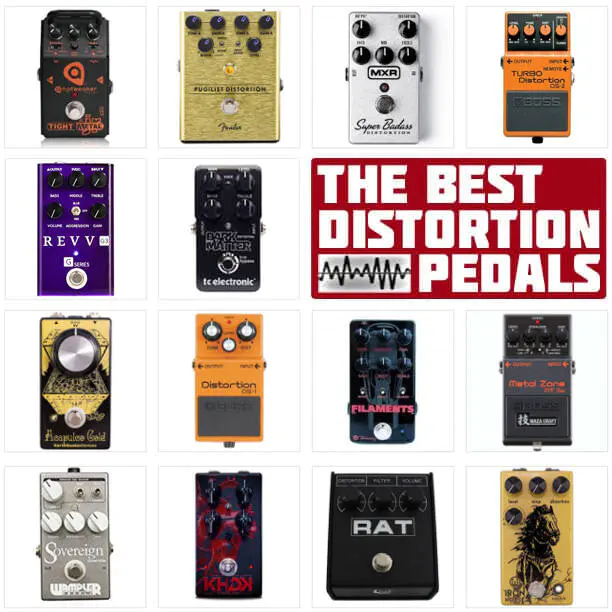
Ready to buy? Please use our affiliate links to Sweetwater, Reverb.com, Amazon, and the other independent stores – that’s what’s allowing us to keep this site alive at no cost to you!
How Did We Compile This Shortlist?
The title of this article may appear loaded to you, and some may wonder: “Who is Delicious Audio to have the last word about the best distortion pedals?” – a question to which we humbly answer: “You are right, and that’s why we aren’t making any decisions here!”
We didn’t compile the selection and order of the pedals featured in this article but aggregated several recent “Best Distortion Pedals” lists by reputable sources we found online (we list them at the end of the page). We also considered some data about each unit’s sales. It doesn’t get less subjective than that!
What Is a Distortion Pedal?
Click below to expand a brief article with a little bit of background on what distortion is…
| Click here to expand/shrink this section |
Today’s Best Distortion Pedals
Without further ado, let’s dive into these top-notch, widely acclaimed distortion devices!
As usual with our interactive galleries, click on the name of the pedal or the image to open a video.
And if, because of this article, you feel inspired to buy something, please use the affiliate links we provide! It’s one of the few ways we have to support this blog and doesn’t cost you anything extra!
1. BOSS DS-1w
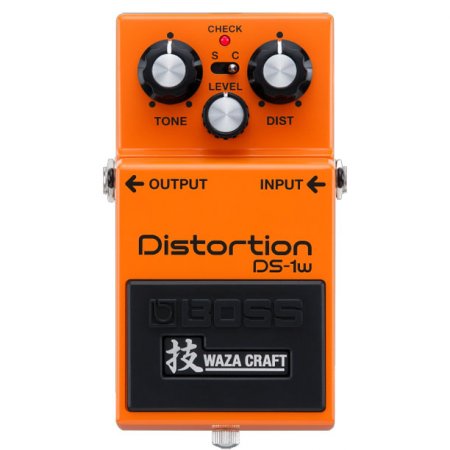
Click/Tap for video
This BOSS distortion pedal is an affordable, evergreen classic that covers your basics and does it with style, and the new DS-1w version addresses the shortcomings of the legendary original.
Released in 1978, the DS-1 is one of the (if not the) best-selling pedals ever. The Level and Dist knobs open up a variety of saturated and distorted sounds, while the Tone knob can make your guitar cut through during a solo or tame the highs for chord sections. Curt Cobain and Prince were big fans of it.
In recent years it seems to have become something of a “love it or hate it” item among guitarists, with some declaring it’s the best pedal distortion ever made, and others simply not getting it. This is probably due to the fact that it’s not precisely a pedal made for warm/dynamic tones, nor it’s the best distortion pedal for blues.
However, the 2022 DS-1w offers an extra Custom mode that offers a bigger sound and more input sensitivity. The Tone control changes behavior in this mode, tuned to boost mids and presence at once, while the level is increased by 6 dB, providing a wider range of gain boost for driving amps and pedals.
On top of that, the circuit of the BOSS DS-1 is extremely prone to modding, as explained in depth in this video by Wampler Pedals titled “What Makes the DS-1 Great?”
Read our Boss DS-1 review.
BOSS DS-1w AT A GLANCE
| YEAR | DS-1 out in 1978, DS-1w out in 2022 |
| PRICE | DS-1: $59/£67/€58 | DS-1w: $149/£129/€159 |
| PROS |
• Classic, Kurt Cobain-proof distortion tones, from crunch to full-on • The new DS-1w offers an extra "fatter" mode |
| CONS |
• The original DS-1 won't do "bluesy warm" nor "fat." • Not the best choice if you have a solid state amp. |
—
2. MXR M75 Super Badass ’75
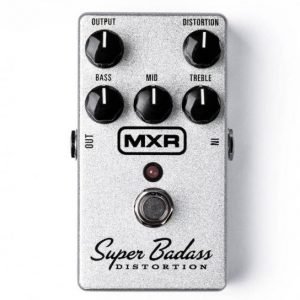
Click/Tap for video
A pedal inspired by the British tone associated with the EL34 tube (read: Marshall and Orange amps), the MXR M75 delivers versatile distortion with plenty of sculpting options thanks to its three-way EQ section. The dedicated Mid knob allows for scooped tones (good for metal) or the more mid-rangey distortion in vogue in the ’70s.
This is a circuit with a lot of range, that can deliver “edge of breakup” and dynamic overdrive tones great for blues at lower gain settings, and get into serious hard-clipping when you turn up the Distortion knob. This makes it one of the best distortion pedals in the “rock” range of genres.
At $99 the price is just right, considering the rugged metal housing and the brand name.
MXR M75 AT A GLANCE
| YEAR | 2013 |
| PRICE | $99/£105/€91 |
| PROS |
• Can deliver a wide palette of distortion styles • Flexible 3-way EQ section • Plenty of gain on tap |
| CONS |
• Rather weak in the low gain range • Not the best choice if you have a solid state amp. |
—
—
3. ProCo Rat
Launched in 1978, the RAT is a classic, evergreen distortion circuit that’s remarkably affordable and quite flexible tone-wise. It seems to be permanently on top of Reverb’s list of best-selling distortion pedals. Its aggressive distortion is achieved by overdriving an op-amp chip, rather than diodes and transistors like most other similar devices do.
There have been a few different versions of the classic RAT featuring different op-amps, but overall, the line has remained true to the original, consistently shining at thick distortion and borderline fuzz tones. At lower gain settings the RAT produces a usable overdrive sound, but this is a pedal born for lead tones, fully distorted rhythm parts, and even over-the-top fuzzy madness when all gain knobs are turned up.
A peculiar thing about this pedal is its Filter knob, which works in a reversed fashion compared to similar EQ controls found in other pedals (i.e. things get darker clockwise and brighter counter-clockwise). As hinted in the name, this really a low-pass filter rather than a “tone” control, adding a lot of versatility to this pedal by allowing the player to roll off the often harsh top end of the distorted tone without affecting the bass frequencies.
Although there are now several different RAT variations, the current updated version of the original is the RAT 2, featuring the new OP07 Op-Amp. Its tone is a tad more aggressive and bright than the (sought-after) vintage units sporting the LM308 chip, but it’s a subtle difference that only obsessive RAT lovers will notice (certainly not your band’s fans).
We have an entire article about the best RAT pedals, reissues and clones, check it out!
PROCO RAT AT A GLANCE
| YEAR | Originally released in 1978 |
| PRICE | $79/£75/€95 |
| PROS | • A classic heavy distortion at an accessible price • Produces borderline fuzz tones at high gain settings • Useful Filter control |
| CONS | • Usable but not outstanding at lower gain settings. |
—
3. Earthquaker Devices Acapulco Gold
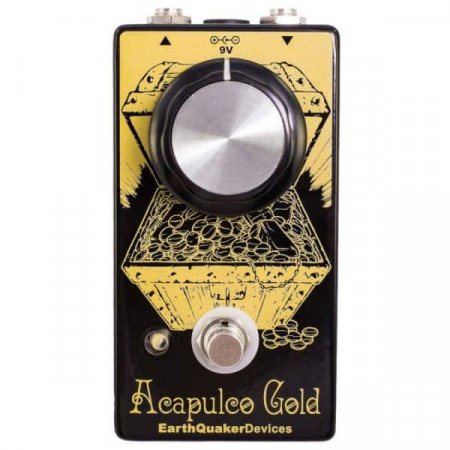
Click/Tap for video
Authentic emulation of a Sunn Model T, a solid-state amp known for its loud and bassy tones manufactured by a Portland-based company founded in 1967 that was acquired by Fender in 1985 and unceremoniously terminated in 2002. The amp’s dark tone was adopted by the Stoner Rock movement of the early ’90s. This one-knob pedal delivers one drive/distortion flavor but does it amazingly well, and with plenty of gain on tap. The circuit is actually very responsive to your guitar’s volume and pickup selection, so you can use those controls to widen your tonal palette from light crunch all the way to that stoner sound the original amp is famous for.
EQD ACAPULCO GOLD AT A GLANCE
| YEAR | 2015 |
| PRICE | $139/£129/€137 |
| PROS |
• Great Sound • Very responsive to pickup and dynamics • Plenty of gain on tap |
| CONS | • The single knob might put off players with tweaking inclinations |
—
4. BOSS DS-2
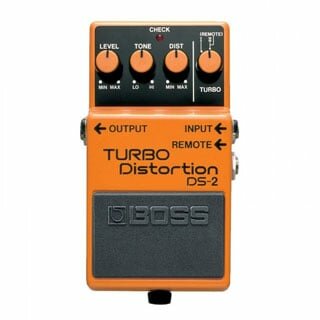
Not necessarily a critics’ darling, this is another evergreen pedal by BOSS that conveys its popularity through its sales (released in 1987, it’s constantly in the top 10 of the Reverb distortion charts and fares well in pretty much any online store’s “popularity” list). More flexible and heavy than the original version of the DS-1, the DS-2 features a Turbo switch that pushes the mid frequencies in a way reminiscent of the Tube Screamer. This can be also activated via an external pedal thanks to a remote input.
BOSS DS-2 AT A GLANCE
| YEAR | 1987 |
| PRICE | $99/£79/€79 |
| PROS |
• Affordable. • A more flexible, higher gain distortion pedal than the DS-1. • The Turbo switch acts as a mid boost and can be controlled via an external footswitch. |
| CONS | • Some players don't like the way Turbo mode sounds on their amps. |
—
6. REVV G3
A pedal designed with metal players in mind by an established boutique amp maker, the REVV G3 is a tight and clear distortion with a very responsive 3-way EQ section and Blue and Red “Aggression” modes that deliver a slightly different character in the mids (red being the most aggressive, “off” the least).
Built by hand in Canada, the G3 is truly boutique, and you can feel that in the price tag. However, considering that it’s voiced after the popular purple channel of the company’s critically acclaimed 120-watt Revv Generator amp (which sells for over $3,000), it may even be a steal at $229 or so.
The amount of gain delivered by this device cannot be underestimated, but gain by itself doesn’t get you in a top ten list! The G3 delivers great sounding distortion, and (much) more than one flavor of it, thanks to a tone-shaping section that’s at once intuitive and useful. Hands down one of the best distortion pedals for metal.
REVV G3 AT A GLANCE
| YEAR | 2018 |
| PRICE | $229/£219/€249 |
| PROS | • A quality, hand-built, true boutique pedal • Responsive and intuitive set of controls • Can deliver a variety of high gain tones |
| CONS | • Pricey • Doesn't do clean |
—
7. Fender Pugilist
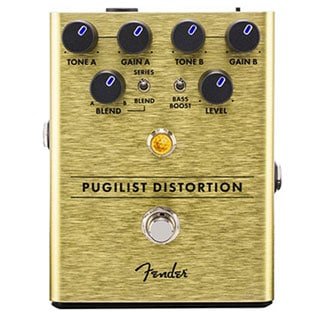
Click/Tap for video
We were quite surprised to find this pedal mentioned in many of the best-of lists we took into account for this piece.
This all-original circuit features dual gain engines—with independent tone controls for each—letting you select multiple variations of distortion and parallel/series configuration. Series/Blend switch lets you stack channels for thick, cascading distortion, while the Bass Boost switch fattens up your tone. Players and critics love it not only for its sound but for its versatility, although it shines at high gain distortion.
It doesn’t have separate footswitches for each channel (something you can have in its bigger and pricier sibling the Fender Duel Pugilist), but at $119, that’s something nobody, in good conscience, can complain about.
Read our Fender Pugilist review.
FENDER PUGILIST AT A GLANCE
| YEAR | 2018 |
| PRICE | $120/£89 |
| PROS |
• We like how it sounds • It marries flexibility and original design • A bargain, considering it's a dual channel distortion |
| CONS |
• Low gain tones not as good as high gain ones • No dedicated footswitch for each channel |
8. EarthQuaker Devices Life Pedal | KHDK Dark Blood | Friedman BE-OD | Walrus Audio Ironhorse V3
We have a four-way tie for 8th place – see videos and descriptions in the following gallery:
—
• Honorable Mentions
These are pedals that got two mentions in the lists we consulted, discover them in the interactive gallery below.

—
• Relevant Videos About Distortion
JHS’s History of Guitar Distortion
Guitar Bonedo’s History of Distortion Pedals (1974 – 2016)
Polyphonics’ History of Distortion, Song by Song
We based this list aggregating the following Best Distortion Pedal lists:
JHS Pedals YouTube Video
PMTVUK YouTube Video
Bonedo Music
Music Radar
Guitar.com
Medium.com
Equipboard
and in part also:
Guitar Habits
Consordini.com
Pmtonline.com
Reverb.com Pedal Sales Charts















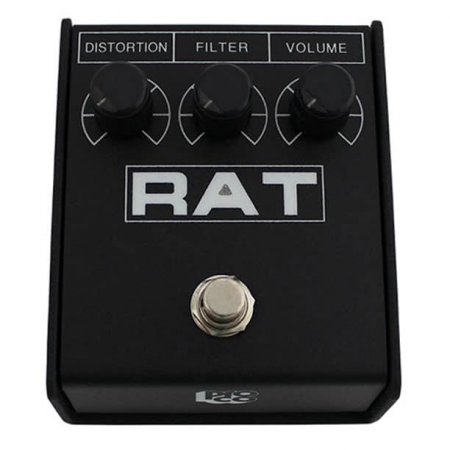



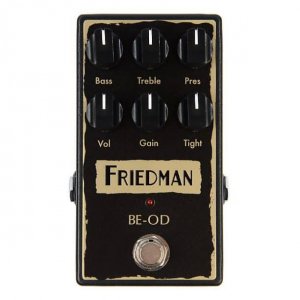
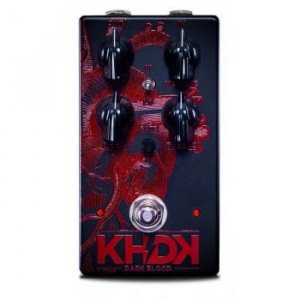

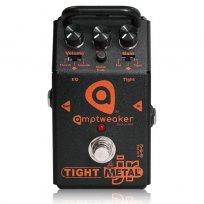
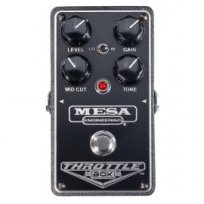
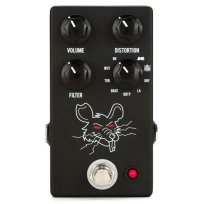
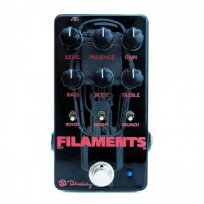
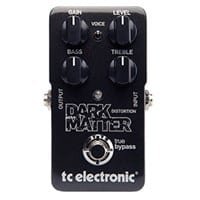
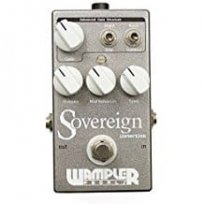








2 comments
Vortendrilbit says:
Jan 28, 2022
I was looking for your list of the best overdrive and buffer pedals, actually. Interesting that the Fuzz Factory didn’t get an honorable mention on this list, though.
Paolo says:
Jan 28, 2022
We only included distortion pedals here, the Fuzz Factory is not a distortion and it’s included in this other article about the Best Fuzz Face-inspired pedals:
https://delicious-audio.com/best-fuzz-face-clones/